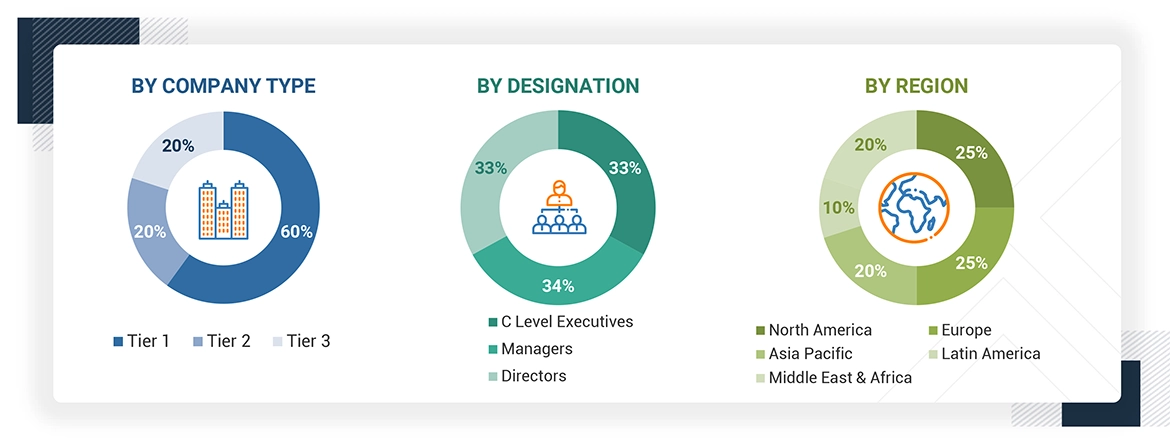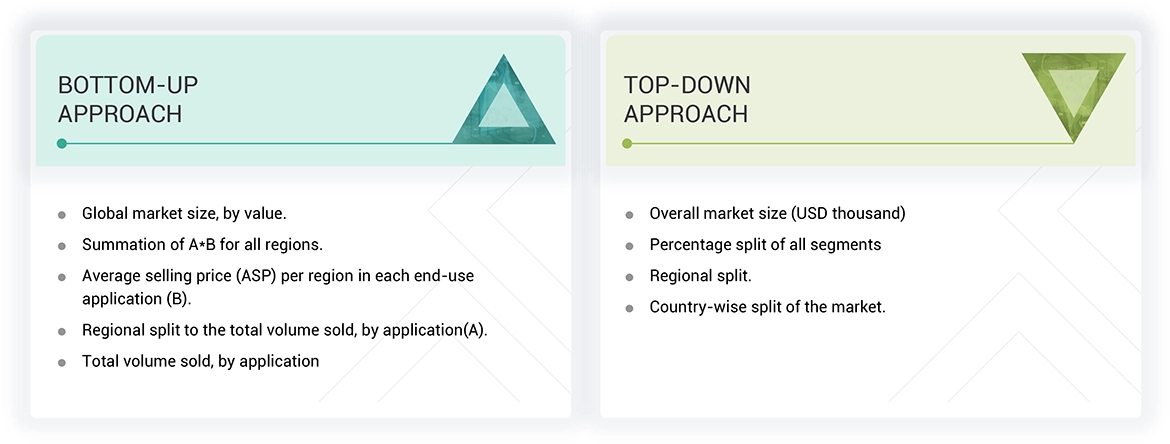The study involves two major activities in estimating the current market size for the bio-polypropylene market. Exhaustive secondary research was done to collect information on the market, peer market, and parent market. The next step was to validate these findings, assumptions, and sizing with industry experts across the value chain through primary research. Both top-down and bottom-up approaches were employed to estimate the complete market size. After that, market breakdown and data triangulation were used to estimate the market size of segments and subsegments.
Secondary Research
Secondary sources referred to for this research study include financial statements of companies offering bio-polypropylene and information from various trade, business, and professional associations. Secondary research has been used to obtain critical information about the industry’s value chain, the total pool of key players, market classification, and segmentation according to industry trends to the bottom-most level and regional markets. The secondary data was collected and analyzed to arrive at the overall size of the bio-polypropylene market, which was validated by primary respondents.
Primary Research
Extensive primary research was conducted after obtaining information regarding the bio-polypropylene market scenario through secondary research. Several primary interviews were conducted with market experts from both the demand and supply sides across major countries of North America, Europe, Asia Pacific, the Middle East & Africa, and Latin America. Primary data was collected through questionnaires, emails, and telephonic interviews. The primary sources from the supply side included various industry experts, such as Chief X Officers (CXOs), Vice Presidents (VPs), Directors from business development, marketing, product development/innovation teams, and related key executives from bio-polypropylene industry vendors; system integrators; component providers; distributors; and key opinion leaders. Primary interviews were conducted to gather insights such as market statistics, data on revenue collected from the products and services, market breakdowns, market size estimations, market forecasting, and data triangulation. Primary research also helped in understanding the various trends related to by source, end-use Industry, application, and region. Stakeholders from the demand side, such as CIOs, CTOs, CSOs, and production teams of the customer/end users who are using bio-polypropylene, were interviewed to understand the buyer’s perspective on the suppliers, products, component providers, and their current usage of bio-polypropylene and future outlook of their business which will affect the overall market.
The Breakup of Primary Research:

To know about the assumptions considered for the study, download the pdf brochure
Market Size Estimation
The research methodology used to estimate the size of the bio-polypropylene market includes the following details. The market sizing of the market was undertaken from the demand side. The market was upsized based on procurements and modernizations in bio-polypropylene in different end-use applications at a regional level. Such procurements provide information on the demand aspects of the bio-polypropylene industry for each application. For each application, all possible segments of the bio-polypropylene market were integrated and mapped.

Data Triangulation
After arriving at the overall size from the market size estimation process explained above, the total market was split into several segments and subsegments. The data triangulation and market breakdown procedures explained below were implemented, wherever applicable, to complete the overall market engineering process and arrive at the exact statistics for various market segments and subsegments. The data was triangulated by studying various factors and trends from the demand and supply sides. Along with this, the market size was validated using both the top-down and bottom-up approaches.
Market Definition
Bio-polypropylene is fully or partially produced from bio-based feedstock. Bio-based polypropylene can be made entirely or partially from biomass and is non-biodegradable. Bio-polypropylene serves as an eco-friendly alternative to conventional polypropylene. It can be synthesized from a variety of renewable resources, including both edible and non-edible oils such as vegetable oils, used cooking oil, hydrogenated vegetable oils, and animal fats. Additionally, starch sources like corn starch, potato starch, and cassava starch are utilized in its production. Other feedstocks include agricultural residues, non-food biomass such as switchgrass and miscanthus, cellulosic biomass, lignin, and sugarcane.
Stakeholders
-
Bio-polypropylene manufacturers
-
Raw material suppliers
-
Distributors and suppliers
-
Industry associations
-
Universities, governments & research organizations
-
Associations and industrial bodies
-
Research and consulting firms
-
R&D institutions
-
Environmental support agencies
-
Investment banks and private equity firms
Report Objectives
-
To define, describe, and forecast the bio-polypropylene market size in terms of volume and value
-
To provide detailed information regarding the key factors, such as drivers, restraints, opportunities, and challenges influencing market growth
-
To analyze and project the global bio-polypropylene market by source, application, end-use Industry and region
-
To forecast the market size concerning five main regions (along with country-level data), namely, North America, Europe, Asia Pacific, Latin America, and the Middle East & Africa, and analyze the significant region-specific trends
-
To strategically analyze micro markets with respect to individual growth trends, prospects, and contributions of the submarkets to the overall market
-
To analyze the market opportunities and the competitive landscape for stakeholders and market leaders
-
To assess recent market developments and competitive strategies, such as agreements, contracts, acquisitions, and new product developments/new product launches, to draw the competitive landscape
-
To strategically profile the key market players and comprehensively analyze their core competencies



Growth opportunities and latent adjacency in Bio-polypropylene Market